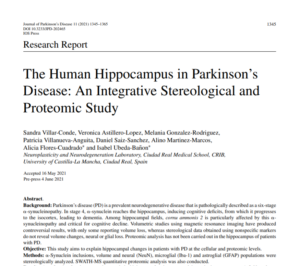
The Human Hippocampus in Parkinson’s Disease: An Integrative Stereological and Proteomic Study
En la enfermedad de Parkinson (EP), la proteína α-sinucleína (α-sin) se acumula en el interior de las neuronas. Se cree que esta proteína puede viajar de una neurona a otra acumulándose y dañando diferentes zonas del cerebro (hipótesis prionoide). La glía, otro tipo de células muy importantes en el cerebro que ayudan en sus funciones a las neuronas, también contribuye a la acumulación y dispersión de la α-sin.

